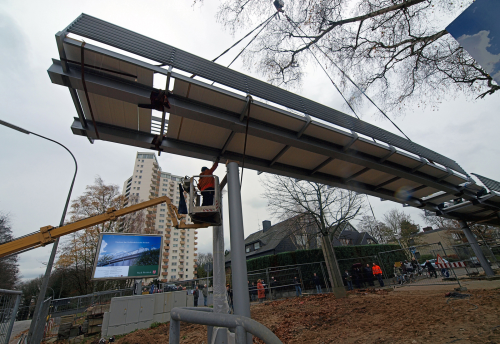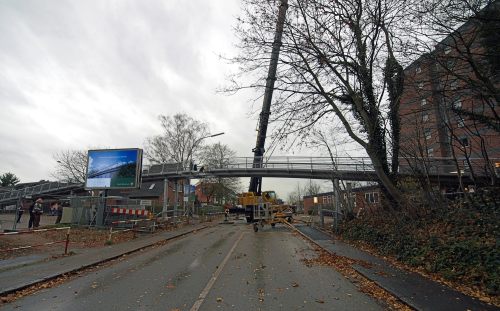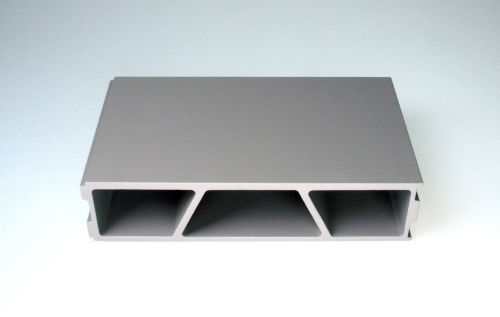


The 100 m x 3.5 m ‘Holländerbrücke’ bridge across the Hamburgerstrasse highway combines a lightweight deck made of composite with steel beams.
The composite bridge deck is constructed from Fiberline Composites' FBD300 pultruded structural profiles. The FBD300 profile is designed for small bridges carrying light traffic and for pedestrian footbridges.
Long service life and resistance to road salt were key factors behind the Reinbek municipality's decision to seek new structural materials for the new bridge.
“Our search for alternatives to conventional materials was primarily prompted by all-round cost considerations," explains the Reinbek municipality’s project manager, Sven Rosenbaum. "Conventional bridge structures often require costly and extensive maintenance after just 15 to 20 years. We expect the new composite bridge to stand for 80 years without the need for major repairs.”
The bridge was designed by German architects and engineers, Werner Sobek, whose brief was to combine low-cost maintenance with an attractive appearance. The architectural design of the bridge was planned in collaboration with Reinbek.
“Our aim was to create a low-cost structure by using non-corrosive materials, minimising the number of components and building the bridge with modules that would be easy to install and if necessary replace," says engineer Heiko Trumpf of Werner Sobek. "The combination of composite and steel also allowed us to create a slimline structure with dynamic surfaces and differentiated colours. The result is a bridge that is pleasant to look at, use and touch."
|
With a height of 80 mm, this deck is especially suitable for direct mounting on existing beam substructures as replacement for decks of life-expired timber and other materials. FBD300 conforms to load class 300 of Dutch standard NEN 6788: 1995. This corresponds to a max. wheel load of 100 kN and a total vehicle weight of 300 kN. During assembly, the support can be either load-carrying beams of GRP composite, steel or concrete. The profiles are bonded together to form an integrated deck which is bolted or glued to the load-carrying beams. The Fiberline profiles can be machined and adjusted using ordinary tools, and their low weight means that handling can be performed without use of heavy lifting gear. The deck can be assembled on site, for example in a tent close to the point of installation, and craned into place. Alternatively the profiles can be mounted directly onto the load-carrying substructure. Assembly can take place 'top-down' without use of scaffoldings. Fiberline can also provide a complete solution with profiles for side cladding and construction of the load-carrying beam layer. |
The bridge was manufactured in the factory and transported by road to the installation site where the three bridge modules were craned into place on prepared footings with minimal disruption to traffic.
“Prefabrication under controlled conditions prior to installation means high quality construction," adds Trumpf. "Short-time installation on site also minimises traffic disruption, a critical consideration for some projects.”





